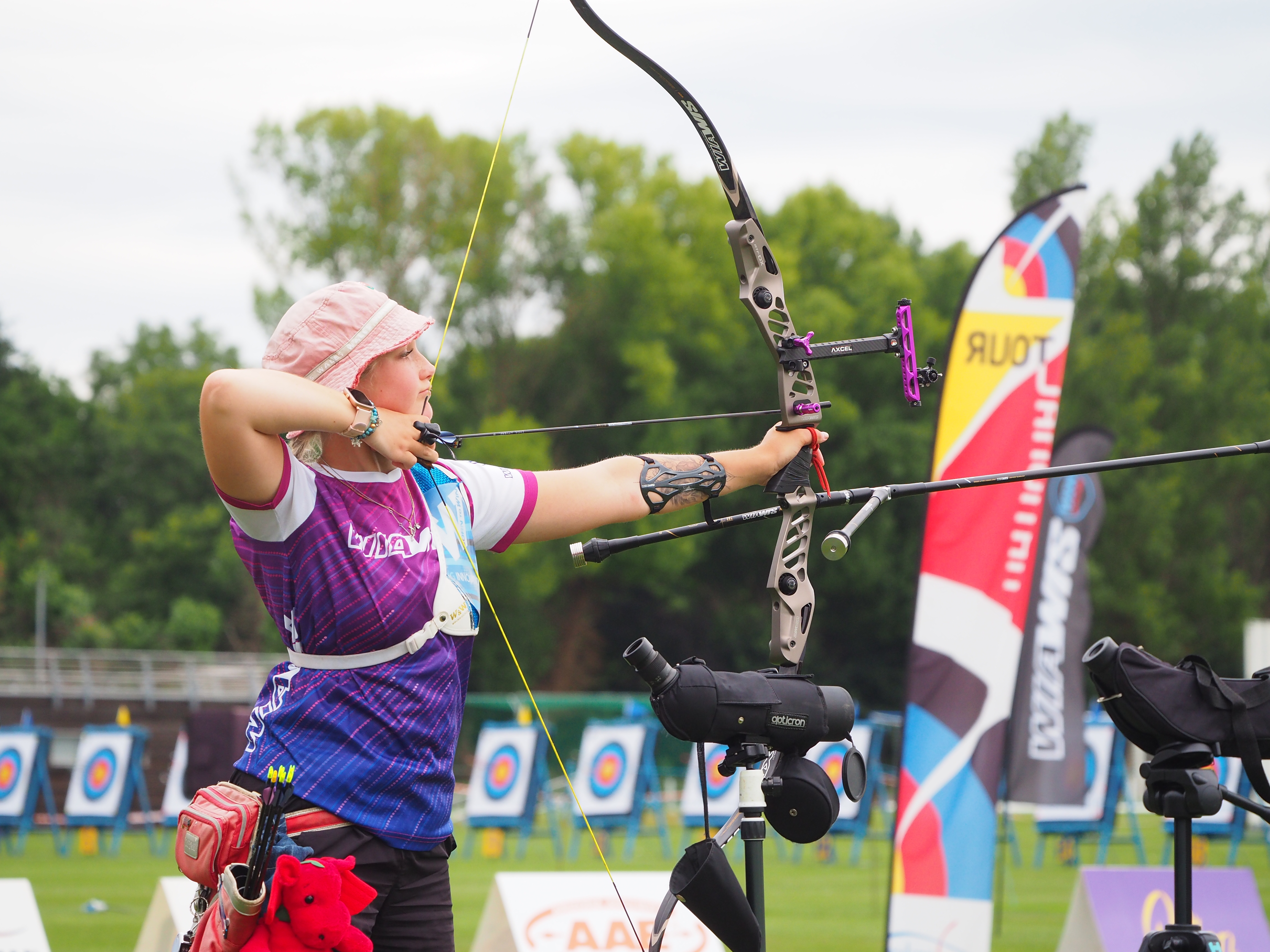Olympic recurve is a style of archery that involves shooting a bow with the use of accessories such as sights and stabilisers.

The term "Olympic recurve" archery refers to a specific style of recurve archery that is used in the Olympic Games. Here are some key kit characteristics of Olympic recurve archery:
Olympic recurve archery is considered one of the most prestigious forms of archery, and it has a rich history in the Olympic Games. It's also an incredibly popular style on archery ranges around the UK. There is an emphasis on precision and accuracy, making it a challenging bowstyle.
Riser
When purchasing your first recurve bow it’s recommended that you spend most of your budget on the riser (the part that you hold). The more expensive the riser is, the tighter the tolerances and the more you can tune it. It is always worth trying out different risers in the hand as each riser has a different grip. © Jonathon Yau
© Jonathon Yau
Limbs
We recommend spending no more than around £100 on your first set of limbs. Limbs are made in many different materials: carbon, graphene, foam, bamboo, fibreglass, wood... The list goes on! Beginner limbs are usually made from wood, foam and fibreglass and more advanced limbs use wood, bamboo, foam and carbon.
It is really important to pay attention to the limb fittings, which is how you connect your limbs to your riser. The limb fittings on your riser must match with your limbs, otherwise you won’ be able to attach your limbs. For this reason, the International Limb Fit System (ILF) is the most common type of limb, and means you’re not limited by brand.
Limbs come in different lengths: short, medium, long. What you need should be determined by your height and draw length. This might have been measured during your beginner’s course, but it’s worth getting it done again at an archery shop because buying limbs that are too short can damage the bow, whereas buying limbs that are too long makes the bow unwieldy and the shot slow.
Sights
Sights are made from materials like aluminium, carbon, or a combination of both. The weight, durability, and overall construction of the sight is something you'll need to take into consideration. Lightweight materials are often preferred, especially for competitive archers.
When you loose the string, the energy travels into the arrow, then continues into the limbs followed by the sight. This part of equipment takes a tremendous amount of vibration. While it's recommended that you choose the best quality sight your budget will allow, there are a wide range of options , and while high-end sights may offer advanced features, there are also quality sights available at a more affordable price. © Jonathon Yau
© Jonathon Yau
Pressure Button (Optional Extra)
Also known as a plunger, the pressure button centres the arrow and stabilises the arrow's flight as it leaves the bow. You can also adjust the tension on the button allowing for more tune ability in your arrows resulting in a more forgiving shot.
Stabilisation (Optional Extra)
When purchasing your first bow, stabilisers are not mandatory and are a completely optional extra. What stabilisers do is take vibration out of the bow, reduce the amount the sight moves, and steadies the bow in your hand. Some shops recommend getting the long rods and side rods at the same time, if budget allows. When using just a long rod, all the weight is extended out in front, making the bow want to drop forward, which can lead to a strained bow arm from trying to counteract that motion. When side rods are attached this balances the setup so that the bow arm can relax more.
There are different length long rods, side rods and extenders, so it is always worth trying out different combinations before making a purchase. © Martin Saych
© Martin Saych
Click on the links below to find out more about the other bowstyles: